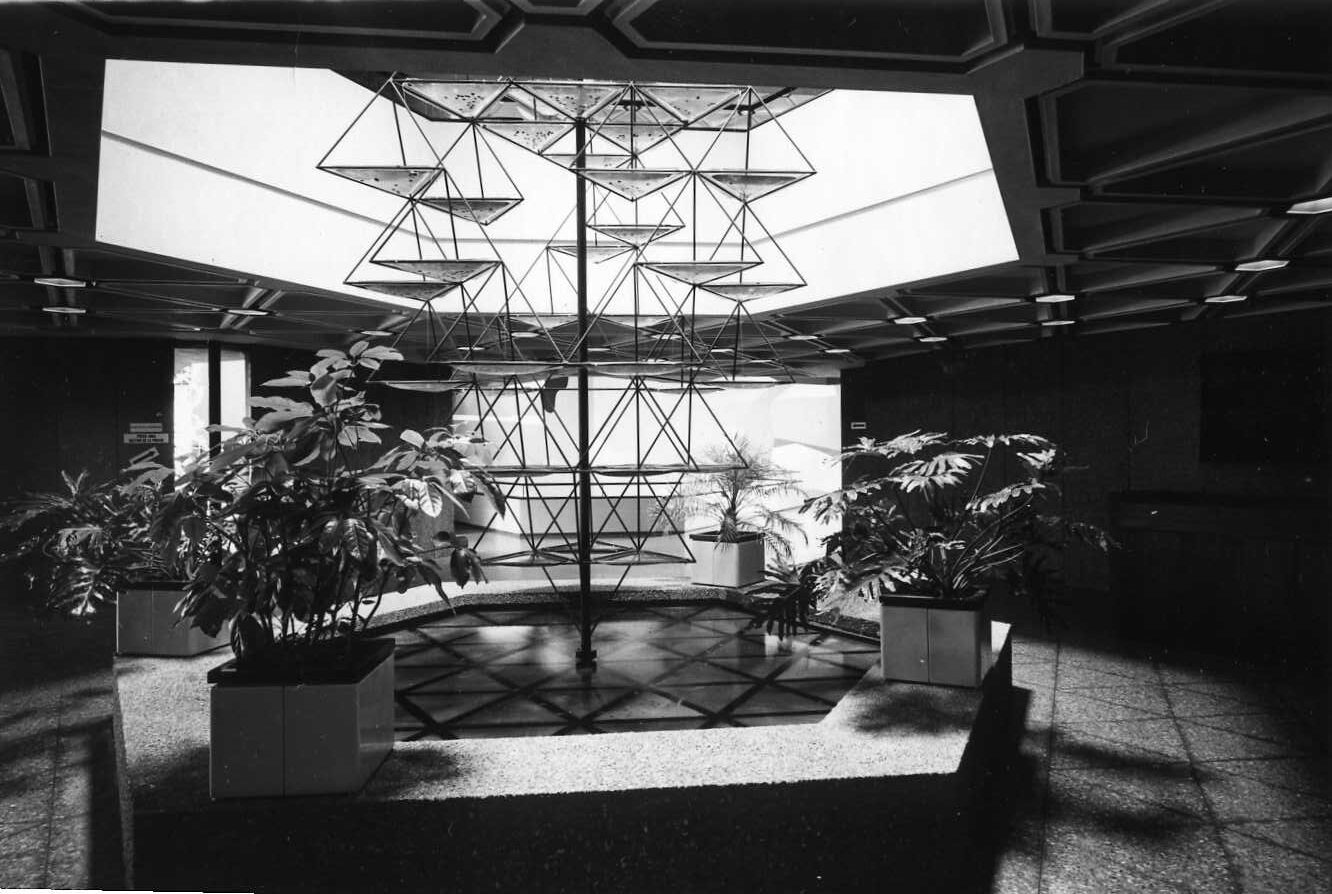Fountain by Julien Hébert:
Living Art
Purpose

Fountain by Julien Hébert is a 2-storey piece that is a joint venture between him and NAC architect Fred Lebensold. Together, they created a multi-dimensional water feature that compliments and continues the triangular aesthetic of the building. This student project will dive into how Fountain is alive, and what that means for a piece of art.
1. Origins
To understand a living piece, we need to understand how it came about by studying it’s artist, Julien Hébert.
2. Materials
Next, we’ll quickly look at the materials that make up the fountain, to understand how it works and exists in the world.
3. Maintenance
Finally, we’ll look into the maintenance that goes into Fountain, and what goes into keeping this piece alive.
Origins: Designer Julien Hébert
Marcoux, G. (2017, February 14). Julien Hébert. Julien Hébert | The Canadian Encyclopedia. https://www.thecanadianencyclopedia.ca/en/article/julien-hebert.
Quick Overview of Materials
Fountain is different from alot of the other artwork you can find in the NAC.
It is not hidden behind a glass case, nor is it hung up on the wall away from the public. Fountain is in the thick of it, and it deals with a lot!
Since it has the kinetic element of flowing water and people being able to get up close and personal with it, this piece is unique in the way that it ages, and requies up-keep. Play the mystery detective game below to find out just how much work goes into keeping Fountain in tip top shape!
Interactive Game

So now we can see what brings Fountain by Julien Hébert alive. With the background on it’s artist, the materials involved and it’s upkeep, Fountain becomes a living, breathing thing that ages and wears down like you and me.

The Art@NAC project is a student assignment within MPAD2002: Basics of Visual Communication. Research, narratives, and development are conducted by Bachelor of Media Production (BMPD) 2nd-year students at Carleton University and it is not an official National Art Centre (NAC), Carleton Immersive Media Studio (CIMS), or Carleton University project. Special thanks to the NAC, CIMS, and Carleton University for their support.
All photographs and videos are provided by the NAC Archives, Carleton Immersive Media Studio, and BMPD Students’ Joe Creech and Eddie Benhin, unless otherwise noted.


